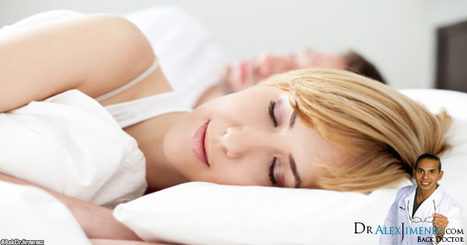The irritating neck pain or back pain symptoms present when waking up in the morning can be a troublesome situation for many. Not to mention how debilitating and impairing the pain and discomfort can be for the individual when the symptoms last throughout the remainder of the day, affecting their work and emotions. Subsequently, if what these individuals have already been through is not enough, imagine what it’s like to return home after a long tiring day, only to realize that the pain is causing the individual to not get a proper night of rest.
To first recognize which are the bad sleeping postures and what causes stiffness and pain in the neck and back, you first have to understand the function of the spine.
The spine, also known as the backbone or vertebral column, consists of 24 articulating vertebrae. Each vertebra is stacked on top of each other and is connected by muscles and ligaments which help maintain the natural alignment of the spine. The spine is referred to as the most important part of the body because it functions to protect the spinal cord and nerves from shock as well as support the weight of the body to provide an upright posture. In between each vertebra, the spinal discs can be found which primarily function as shock absorbers to protect each bone from rubbing against each other. Also, these act as ligaments to hold together the shape of the spine.
A healthy spine extends from the skull to the pelvis in alignment with the head, neck and back when viewed from the front or back. When the spine is viewed from the side, there should be 3 naturally slight curves; the cervical curve (neck area), the thoracic curve (upper back area) and the lumbar curve (lower back area) that form into a natural “S” shape. These curves maintain their normal structure by two groups of muscles; the flexors (front and abdominal muscles) and the extensors (back muscles) which gently hold and pull on the spine, allowing it to have proper mobility.



 Your new post is loading...
Your new post is loading...








For many people, waking up with uncomfortable symptoms is an irritating situation they experience throughout their lifetime. In fact, many individuals are unaware that improper sleeping postures can lead to spinal misalignments which may eventually develop into neck and back pain. Sleeping positions are unconsciously established since childhood but these can be adjusted in adulthood to prevent neck and back pain as well as achieve proper sleep quality. For more information, please feel free to ask Dr. Jimenez or contact us at (915) 850-0900.